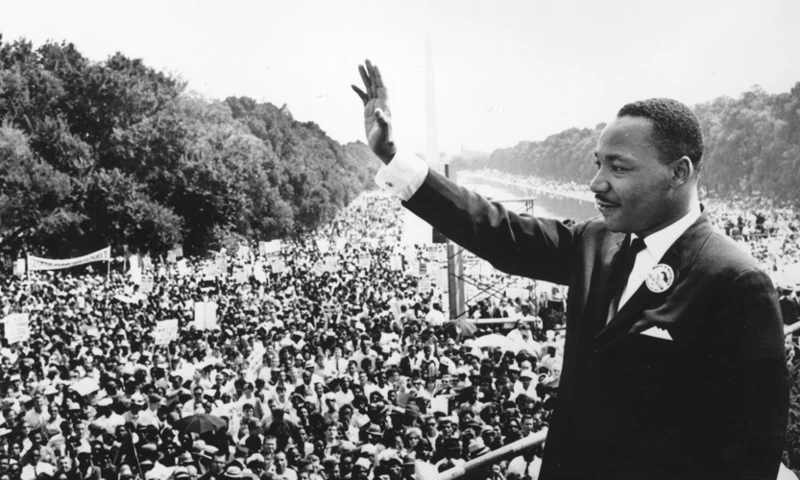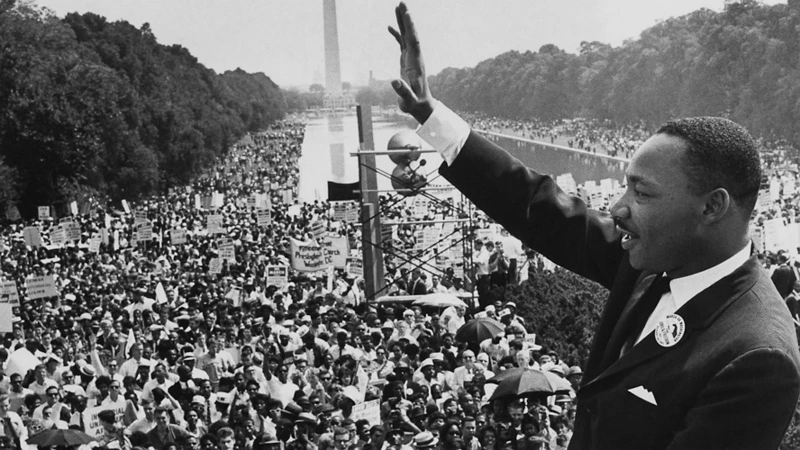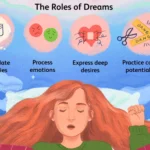Uncovering the Profound Meaning Behind MLK’s Iconic ‘I Have a Dream’ Speech
Background of MLK and the Civil Rights Movement

Understanding the profound ‘I Have a Dream’ speech requires delving into the background of Martin Luther King Jr. and the Civil Rights Movement – two interconnected forces that shaped the course of American history. Reverend Dr. Martin Luther King Jr. was a prominent civil rights activist, who advocated for racial equality and justice through peaceful means. His impassioned speeches and tireless efforts played a pivotal role in the advancement of the Civil Rights Movement in America. The movement aimed to dismantle systemic racial segregation and discrimination, seeking to secure equal rights and opportunities for African Americans in all aspects of society. With King’s leadership and the collective action of countless individuals, the Civil Rights Movement witnessed significant milestones and transformative changes in the fight for equality.
1. The Life and Legacy of Martin Luther King Jr.
Martin Luther King Jr., born on January 15, 1929, in Atlanta, Georgia, emerged as a prominent figure in the Civil Rights Movement during the 1950s and 1960s. He was deeply influenced by his Christian upbringing and the teachings of Mahatma Gandhi, which inspired him to espouse nonviolent resistance as a means to combat racial injustice. King dedicated his life to fighting for equality and was instrumental in organizing peaceful protests, boycotts, and marches. His leadership and oratory skills made him a powerful voice in the struggle for civil rights.
2. The Civil Rights Movement in America
- Rosa Parks and the Montgomery Bus Boycott: In 1955, the refusal of Rosa Parks, an African American woman, to give up her seat on a segregated bus sparked the Montgomery Bus Boycott. This year-long protest against racial segregation on public transportation served as a powerful catalyst for the Civil Rights Movement, giving rise to leaders like Martin Luther King Jr. and highlighting the determination of African Americans to challenge discriminatory laws.
- The March on Washington: On August 28, 1963, over 250,000 people gathered in Washington, D.C., for the historic March on Washington for Jobs and Freedom. This peaceful demonstration aimed to advocate for civil rights legislation and equality for African Americans. It was during this event that MLK delivered his iconic ‘I Have a Dream’ speech, which reverberated across the nation and remains a symbol of hope and equality.
- The Civil Rights Act of 1964: This landmark legislation outlawed racial segregation and discrimination in public facilities, schools, employment, and voting. It was a significant victory for the Civil Rights Movement, as it provided legal protections and paved the way for further progress in the fight for equality.
- The Voting Rights Act of 1965: This act aimed to overcome discriminatory voting practices that targeted African Americans. It prohibited racial discrimination in voting, removed obstacles to voter registration, and ensured fair access to the voting process. The act played a crucial role in empowering African American voters and strengthening democratic participation.
The Context of the ‘I Have a Dream’ Speech

To fully grasp the significance of the iconic ‘I Have a Dream’ speech, it is essential to explore the context in which it was delivered. The speech was delivered during the historic March on Washington for Jobs and Freedom on August 28, 1963. This event brought together over 250,000 civil rights supporters, demanding equal rights for African Americans and an end to racial discrimination. The march aimed to pressure the government to pass civil rights legislation and highlight the urgent need for social and economic reforms. Martin Luther King Jr., as one of the key organizers of the march, delivered his powerful speech at the Lincoln Memorial, captivating the nation with his vision of racial harmony and equality. The speech itself was not only a turning point in the civil rights movement but also a defining moment in American history.
1. The March on Washington for Jobs and Freedom
- The March on Washington for Jobs and Freedom played a significant role in setting the stage for Martin Luther King Jr.’s iconic ‘I Have a Dream’ speech. Held on August 28, 1963, in Washington D.C., it was a massive political rally that gathered approximately 250,000 demonstrators, demanding equal rights and economic opportunities for African Americans. The march was organized by various civil rights organizations and leaders, with the goal of advocating for meaningful civil rights legislation and addressing issues such as unemployment and segregation. It was during this historic event that MLK delivered his renowned speech at the Lincoln Memorial, captivating the crowd and leaving an indelible mark on the civil rights movement. The March on Washington was a powerful display of unity, solidarity, and the pursuit of social justice.
2. MLK’s Role in the March and Speech Preparation
- MLK’s Leadership: Martin Luther King Jr. played a pivotal role in organizing the historic March on Washington for Jobs and Freedom, where he delivered his iconic ‘I Have a Dream’ speech. As one of the key leaders of the Civil Rights Movement, King’s vision and ability to mobilize the masses were instrumental in bringing together diverse groups of activists, organizers, and supporters for this monumental event.
- Speech Preparation: Prior to the March, MLK and his team dedicated themselves to preparing the speech that would go down in history. King drew upon his deep knowledge of the African American struggle for freedom and justice, weaving together his personal experiences and the aspirations of his community. The speech underwent several revisions, each aimed at capturing the essence of the movement and inspiring millions of people around the world.
- Emotional Impact: MLK’s words were carefully chosen to evoke both the pain and hope embedded in the fight for racial equality. He delivered the speech with unwavering conviction, infusing it with his unwavering determination and passion. The result was a speech that not only resonated with the crowd that day but continues to inspire generations.
Analyzing the Key Messages and Themes

- The Dream of Racial Equality: One of the key messages of MLK’s ‘I Have a Dream’ speech was the vision and aspiration for racial equality. He passionately spoke about his dream of a nation where people are not judged by the color of their skin, but by the content of their character. This powerful message resonated with the audience and captured the essence of the Civil Rights Movement’s goal to eradicate racial discrimination and create a society where everyone is treated with dignity and respect.
- The Struggle for Freedom and Justice: MLK’s speech also highlighted the ongoing struggle for freedom and justice for African Americans. He emphasized the importance of taking action and not being complacent in the face of injustice. By calling for justice to “roll down like waters and righteousness like a mighty stream,” King urged individuals to stand up against inequality and fight for the civil rights that had long been denied to minority communities.
- Unity and Brotherhood Amongst All Races: Another significant theme of the speech was the need for unity and brotherhood among people of all races. MLK envisioned a future where individuals from different backgrounds and ethnicities would come together and live harmoniously, overcoming divisions and prejudices. The speech emphasized the idea that true progress can only be achieved when all individuals stand together as brothers and sisters, united in the pursuit of equality and justice.
1. The Dream of Racial Equality
At the heart of MLK’s ‘I Have a Dream’ speech was his unwavering conviction in the dream of racial equality. King passionately spoke about his vision of a nation where individuals would be judged not by the color of their skin, but by the content of their character. His dream encompassed a future where African Americans would have the same rights, opportunities, and privileges as their white counterparts. King eloquently expressed his hope that one day, the chains of segregation and discrimination would be shattered, and a society where racial harmony and justice prevailed would emerge. This dream, rooted in the deeply-held values of equality and justice, resonates powerfully to this day, inspiring generations to continue the fight for a more inclusive and equitable society.
2. The Struggle for Freedom and Justice
- In the ‘I Have a Dream’ speech, Martin Luther King Jr. eloquently expressed the relentless struggle for freedom and justice. He emphasized the urgent need to dismantle racial segregation and discrimination, viewing them as oppressive barriers that denied African Americans their basic human rights.
- The speech highlighted the injustices faced by the African American community, such as voter suppression, economic inequality, and police brutality. King passionately advocated for the creation of a society where individuals are judged not by the color of their skin, but by the content of their character.
- King’s words resonated with millions of people who were yearning for positive change in America. Through his powerful rhetoric, he called for the recognition and protection of the fundamental rights and freedoms that should be afforded to every individual, regardless of their race or background.
3. Unity and Brotherhood Amongst All Races
One of the key messages emphasized in MLK’s ‘I Have a Dream’ speech was the importance of unity and brotherhood amongst all races. He envisioned a society where people of different ethnicities could join together in harmony, with a shared goal of equality and justice. MLK advocated for the eradication of racial divisions, promoting a vision of a united America where individuals are judged not by the color of their skin but by the content of their character. His powerful words resonated with people from all walks of life and inspired a collective sense of purpose in the pursuit of racial harmony. By highlighting the need for unity and brotherhood, MLK aimed to foster understanding, empathy, and solidarity among people of different races, aiming for a society where diversity is celebrated and equality is embraced.
The Power of MLK’s Rhetoric

The power of MLK’s rhetoric cannot be overstated. Through his eloquent and captivating speeches, King was able to effectively communicate his message of racial equality, justice, and unity. One of the key elements that made his rhetoric so impactful was his skillful use of metaphors and imagery, painting a vivid picture in the minds of his audience. King’s use of powerful words and persuasive language evoked strong emotions and resonated with people from all walks of life. His passionate delivery and unwavering conviction added to the intensity of his speeches, making them incredibly compelling. The ‘I Have a Dream’ speech, in particular, showcased King’s rhetorical prowess as he articulated his vision for a future where people would be judged by the content of their character rather than the color of their skin. This speech continues to inspire generations and serves as a reminder of the enduring power of words and the impact they can have on society.
1. The Use of Metaphors and Imagery
- Metaphors: Dr. King’s ‘I Have a Dream’ speech is renowned for its masterful use of metaphors, which allowed him to paint vivid imagery and evoke powerful emotions in his audience. One of the most memorable metaphors in the speech is when King refers to the unfulfilled promises of equality as a ‘bad check.’ This metaphor highlights the discrepancy between America’s founding principles and the reality of racial inequality. Another striking metaphor is when King envisions a future where people will not be judged by the color of their skin but by the content of their character, comparing this ideal to a ‘beautiful symphony of brotherhood.’
- Imagery: King’s speech also incorporates powerful imagery to convey his message effectively. He speaks of the ‘sweltering heat of injustice’ and the ‘whirlwinds of revolt,’ painting a vivid picture of the harsh realities faced by African Americans and the urgency for change. King’s use of imagery helps the audience connect emotionally to the struggles and aspirations of the Civil Rights Movement, forging a deeper understanding of the injustices at hand.
2. The Emotional Appeal and Passionate Delivery
One of the key factors that made MLK’s ‘I Have a Dream’ speech so impactful was the emotional appeal and passionate delivery with which it was delivered. King’s ability to connect with his audience on a deep emotional level enhanced the power and resonance of his words. He drew upon the pain and suffering experienced by African Americans, as well as the shared aspirations for freedom and equality, to elicit a profound emotional response. Through his powerful cadence, intonation, and gestures, King was able to captivate and inspire his listeners, leaving a lasting impression. His passionate delivery amplified the urgency and significance of the message, creating an indelible impact on all who heard him speak.
The Impact and Legacy of the Speech
- Immediate Reactions and Public Response: MLK’s ‘I Have a Dream’ speech resonated deeply with listeners across the nation and had an immediate impact. It stirred emotions, inspired hope, and rallied support for the Civil Rights Movement. The speech was widely praised for its powerful rhetoric and profound message of equality and unity. It became a defining moment in American history and a testament to the struggle for civil rights.
- MLK’s Influence on the Civil Rights Movement: The legacy of MLK’s ‘I Have a Dream’ speech extends far beyond the immediate aftermath of its delivery. The speech solidified MLK’s status as a prominent figure in the Civil Rights Movement and provided a clear vision for the movement’s goals. MLK’s words and actions continue to inspire activists and leaders fighting for social justice and equal rights today. His speech serves as a guiding light in the ongoing pursuit of racial equality and serves as a reminder of the power of words in effecting change.
1. Immediate Reactions and Public Response
Immediate reactions and public response to Martin Luther King Jr.’s ‘I Have a Dream’ speech were nothing short of remarkable. The speech, delivered on August 28, 1963, during the March on Washington for Jobs and Freedom, resonated deeply with millions of Americans across the nation. King’s powerful words touched the hearts of individuals from various racial backgrounds, inspiring hope and igniting a sense of unity in the pursuit of racial equality. His dream of a world where people are judged not by the color of their skin but by the content of their character struck a chord, triggering an outpouring of support for the Civil Rights Movement. The speech received overwhelmingly positive reviews and was widely praised for its stirring rhetoric and profound message, catapulting Martin Luther King Jr. to become a defining figure in American history.
2. MLK’s Influence on the Civil Rights Movement
MLK’s influence on the Civil Rights Movement cannot be overstated. His visionary leadership, impassioned rhetoric, and unwavering commitment to nonviolent protest propelled the movement forward and inspired countless individuals. Through his speeches, such as the iconic ‘I Have a Dream’ speech, King articulated the aspirations and frustrations of African Americans, galvanizing support and mobilizing allies from diverse backgrounds. His powerful words resonated with audiences across the nation, highlighting the urgency of achieving racial equality and justice. King’s influence on the Civil Rights Movement extended beyond the words he spoke – he organized peaceful protests, led boycotts, and tirelessly campaigned for policy reforms that would dismantle systemic racism. His advocacy and sacrifice ultimately paved the way for significant legislative victories, including the Civil Rights Act of 1964 and the Voting Rights Act of 1965, which brought about substantial progress in the ongoing struggle for racial equality.
Conclusion
In conclusion, the ‘I Have a Dream’ speech by Martin Luther King Jr. continues to resonate as a powerful symbol of hope, equality, and justice. Through his masterful use of rhetoric and impassioned delivery, King galvanized the nation, calling for an end to racial discrimination and the realization of a truly inclusive society. His dream of a nation where individuals are judged not by the color of their skin but by the content of their character still inspires generations to strive towards a more equitable future. The impact of King’s speech went far beyond its immediate reception, playing a pivotal role in shaping the Civil Rights Movement and leaving a lasting legacy in the fight for human rights. The ‘I Have a Dream’ speech stands as a testament to the power of words, vision, and the unwavering determination of one man to bring about meaningful change. King’s dream lives on, encouraging us all to work towards a world where justice and equality prevail.
Frequently Asked Questions
1. What was Martin Luther King Jr.’s role in the Civil Rights Movement?
Martin Luther King Jr. was a pivotal figure in the Civil Rights Movement, serving as a prominent leader and activist. He believed in nonviolent resistance and led peaceful protests and demonstrations to bring attention to racial injustices and advocate for equality.
2. What inspired MLK to deliver the ‘I Have a Dream’ speech?
MLK’s inspiration stemmed from his belief in the dream of racial equality and justice. He envisioned a future where individuals would be judged by the content of their character, rather than the color of their skin.
3. What was the significance of the March on Washington for Jobs and Freedom?
The March on Washington for Jobs and Freedom was a historic event that brought together approximately 250,000 individuals to advocate for civil rights, economic equality, and an end to racial discrimination. It was during this march that MLK delivered his iconic ‘I Have a Dream’ speech.
4. How did MLK prepare for his speech?
MLK spent weeks preparing for his speech, researching and refining his message. He worked with a team of advisors and drew upon his own experiences and beliefs to craft his powerful words.
5. What were the key messages in MLK’s ‘I Have a Dream’ speech?
The key messages in MLK’s speech included the dream of racial equality, the struggle for freedom and justice, and the importance of unity and brotherhood amongst all races.
6. How did MLK use metaphors and imagery in his speech?
MLK masterfully utilized metaphors and imagery to paint a vivid picture of his vision for America. From the imagery of the “promised land” to the metaphor of America’s “bank of justice,” he captivated his audience and made his message resonate deeply.
7. Why was MLK’s speech emotionally impactful?
MLK’s passionate delivery, filled with conviction and emotion, made his speech deeply impactful. His words resonated with the audience, evoking powerful emotions and inspiring a sense of hope and unity.
8. How did the public respond to MLK’s ‘I Have a Dream’ speech?
The ‘I Have a Dream’ speech received overwhelmingly positive public reactions. It became a cornerstone of the Civil Rights Movement, inspiring millions and galvanizing support for the cause of racial equality.
9. What was MLK’s impact on the Civil Rights Movement?
MLK’s leadership and activism played a crucial role in advancing the Civil Rights Movement. His speeches, including the ‘I Have a Dream’ speech, helped mobilize and unite individuals in the fight against racial discrimination, leading to significant legislative and societal changes.
10. What is MLK’s lasting legacy?
MLK’s legacy is one of courage, perseverance, and a relentless pursuit of justice. His impact on the Civil Rights Movement and his unwavering commitment to equality continue to inspire generations to work towards a more inclusive and just society.







